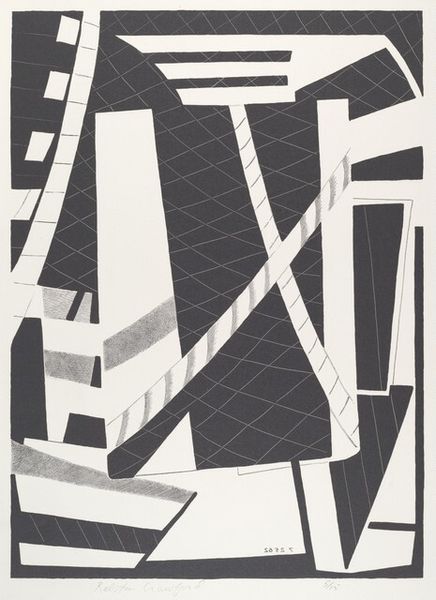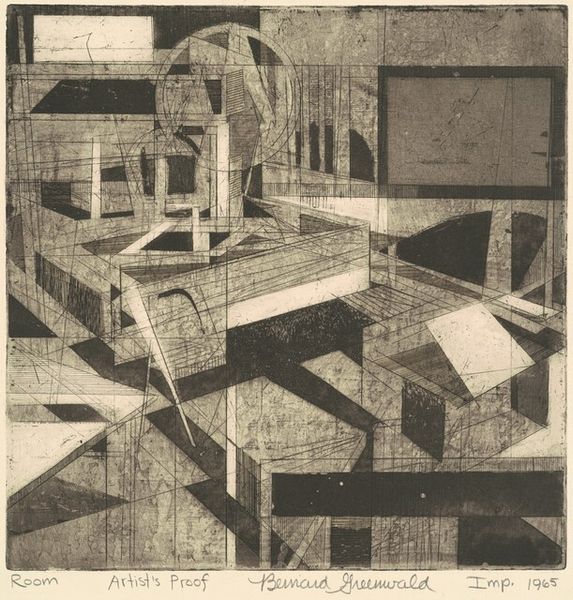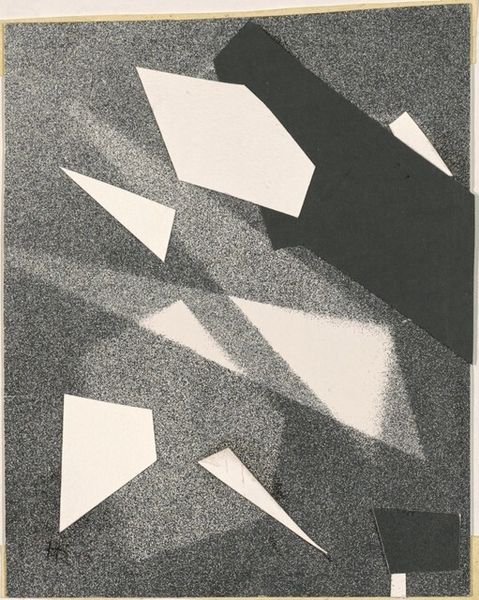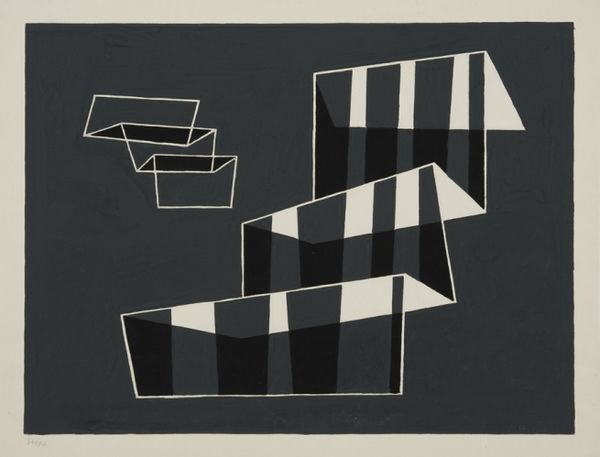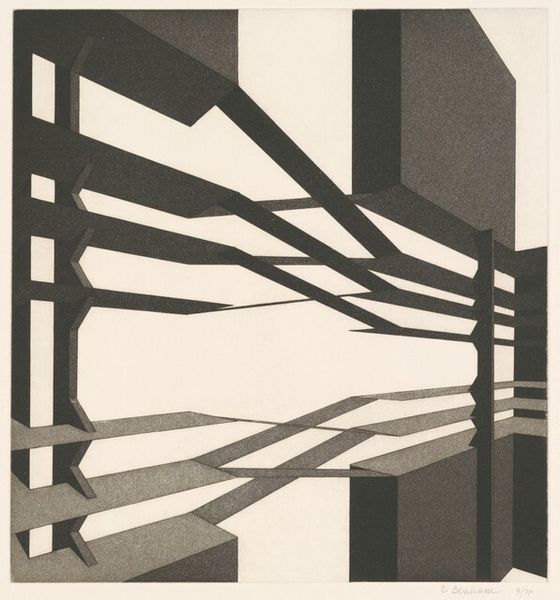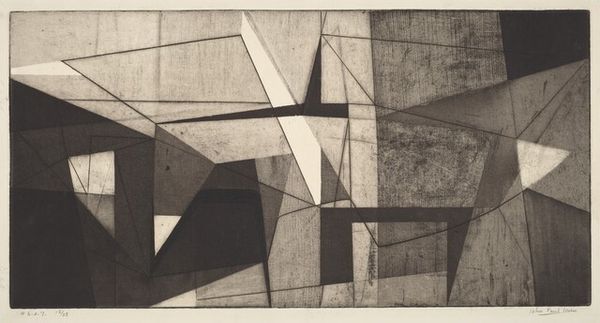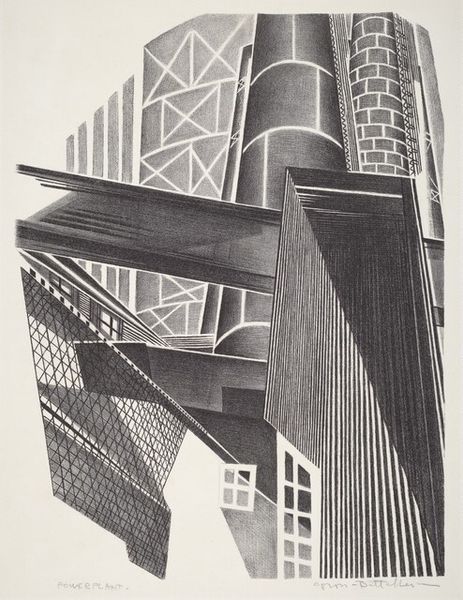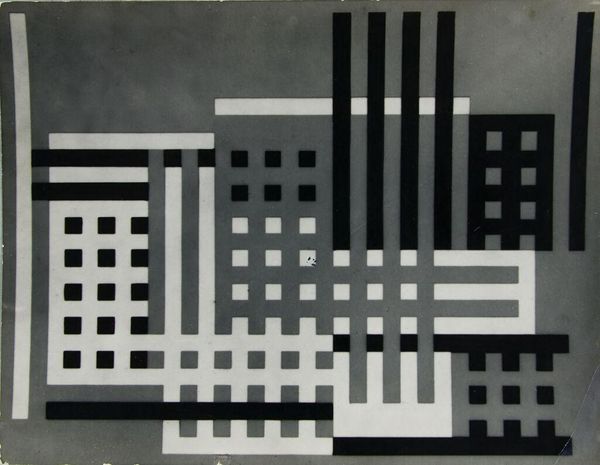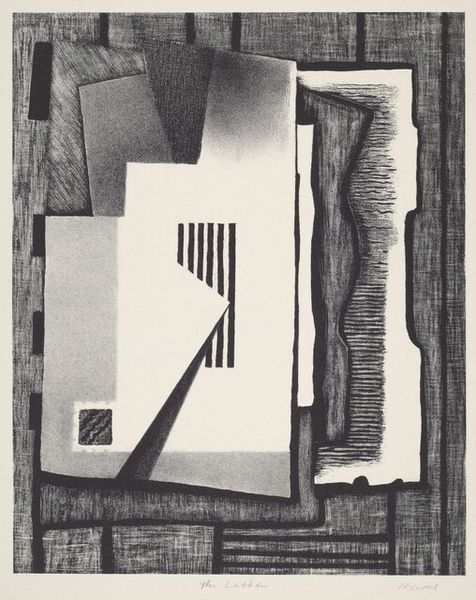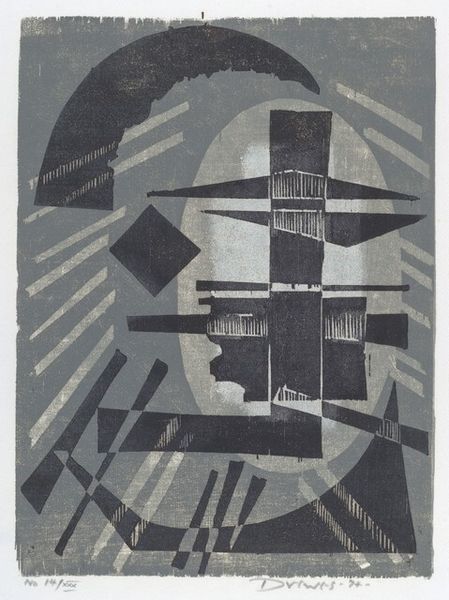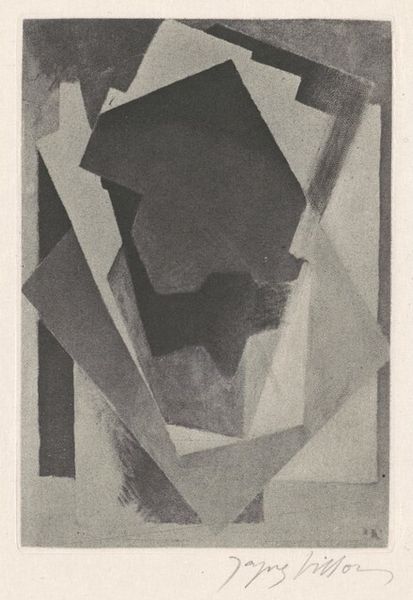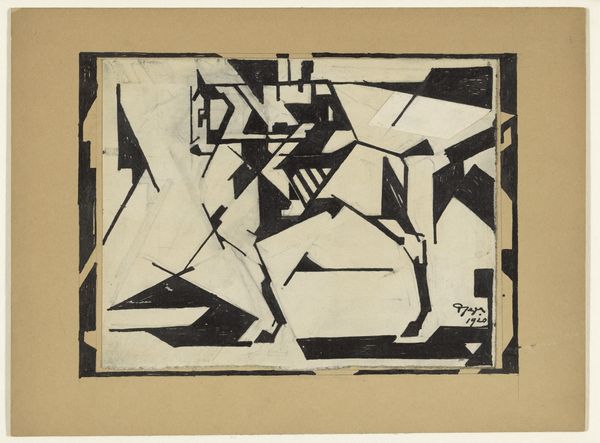
Dimensions: image: 175 x 127 mm
Copyright: © The estate of Edward Wadsworth | CC-BY-NC-ND 4.0 DEED, Photo: Tate
Editor: Here we have Edward Wadsworth's "View of a Town," a monochromatic work with a striking geometric composition. I'm fascinated by the texture created with such limited materials. What are your thoughts on this piece? Curator: The limited materials actually highlight the process. Wadsworth, deeply involved with Vorticism, shows us the industrial age's impact. Note the sharp angles, the repetitive forms; these aren't just aesthetic choices. How does this abstraction reflect the changing labor landscape of the early 20th century? Editor: So, it's less about the town itself and more about the *making* of the town, the labor? Curator: Precisely. Consider the woodcut technique, a process of carving and reproduction. It mirrors the mass production Wadsworth observed. His Vorticist aesthetic rejects traditional artistic values, embracing the machine age. Editor: That definitely shifts my perspective. I’ll be looking at this with fresh eyes now. Curator: Indeed. It's a potent reminder that art is deeply intertwined with its means of production and consumption.
Comments
tate 7 months ago
⋮
http://www.tate.org.uk/art/artworks/wadsworth-view-of-a-town-p07118
Join the conversation
Join millions of artists and users on Artera today and experience the ultimate creative platform.
tate 7 months ago
⋮
Wadsworth’s abstract view of an industrial town is made of interlocking roofs and chimney stacks. It has been identified with Bradford. The urban scene is presented as geometric and streamlined, without any trace of people. The work exists in several colour variations, including grey and black (as here), deep purple and green, and lilac and black. This is an approach Wadsworth took with many of his prints. For instance, The Open Window c.1915 (displayed nearby) was produced in six different versions with colours ranging from grey to scarlet – from austere restraint to fierce exuberance. Gallery label, October 2020
